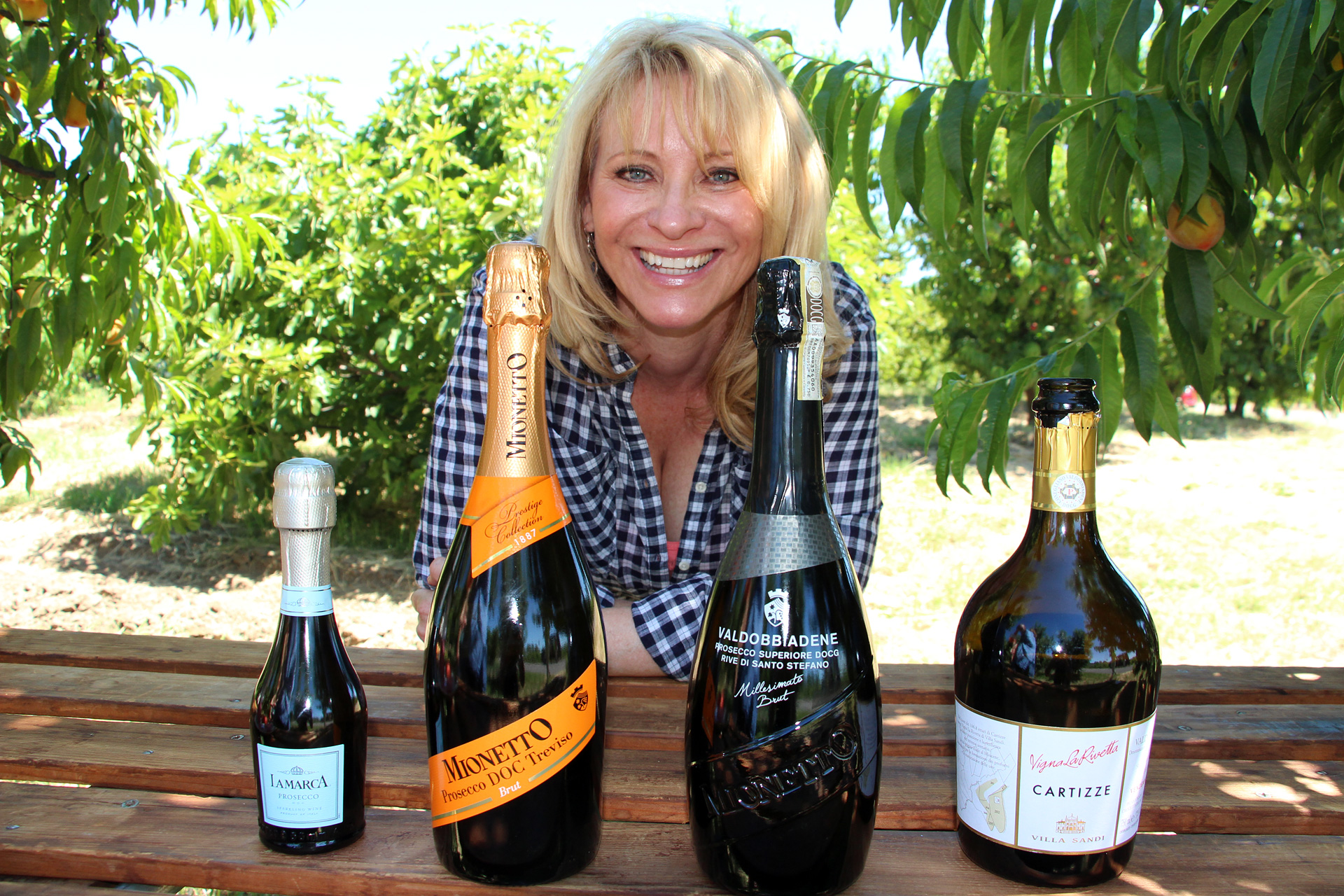Join Taste This host Leslie Sbrocco as she picks peaches at Dry Creek Peach and Produce, the last remaining organic peach farm in Sonoma. She teams up with Gayle Okumura Sullivan, Dry Creek Peach owner, to make the perfect Bellini and Leslie teaches us a thing or two about Prosecco along the way.
Recipe: Dry Creek Peach Bellini
(adapted from the Hotel Cipriani/Harry's Bar)
-
Ingredients:
- ½ - ¾ lb. white peaches, sliced and pitted
- ½ cup water
- 1/4 cup lemon juice or more to taste
- 2 tablespoons sugar
-
Instructions:
- In a bowl of a blender, combine the peaches, water, lemon juice and sugar and blend until smooth.
- Strain the puree through a fine mesh strainer and pour into a glass pitcher.
- Add one bottle of chilled Prosecco and stir.
- Serve in chilled champagne glasses. Enjoy!

DOC and DOCG Categories Explained
-
Italian wine labels are required by law to show:
- producer name
- appellation
- vintage
- alcohol content
- bottle volume
Italy began developing its official wine classifications in the 1960s and introduced the DOC and DOCG categories in 1963. In 1969 Prosecco was classified DOC. In mid 2009, regulations were revised to clearly state that Prosecco was no longer classified as a “type of vine” but a region that was clearly delimited and known as the Conegliano-Valdobbiadene area. This historic step recognized and formalized the quality of the Prosecco sparkling wines.
DOC — Denominazione di Origine Controllata
DOC is a Italian quality assurance designation for wine and food. To receive this label, a product must adhere to quality assurance rules as well as the location defined in the rules. DOC is the main tier of Italian wine classification, and covers almost every traditional Italian wine style. There are around 330 individual DOC titles, each with a set of laws governing its viticultural zone, permitted grape varieties and wine style.
DOCG – Denominazione di Origine Controllata e Garantita.
The addition of the “G” for “garantita” (guarantee) denotes more controlled methods and guaranteed wine quality. The DOC denomination increased the value of restricted areas where the slopes are steep, thus forcing vineyards to do all vine work by hand. DOCG wines contain the permitted grape varieties and ripeness along with yield limits, winemaking procedures and barrel/bottle maturation. The standards of DOCG are very similar to DOC except that DOCG requires government licensed personnel to taste wines prior to bottling. Once approved, the bottles have a numbered government seal across the neck.